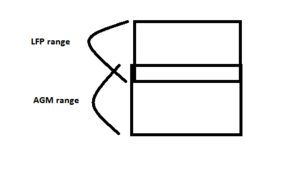I have two 8D batteries for starting and six 8Ds for the house. I'm happy to say that they're all in need of replacement..... ugh!
It's now cheaper for me to replace the house 8Ds with LIFEPOs than AGMs. 12V 280Ah Eco Worthy units are now just $500 each as opposed to the best price I could find for 250 Ah AGMs at $568. Plus I get all that more usable Ah. Using 50% state of discharge for the AGMs I would have 750 usable Ah from all 6, and more than 950 Ah from just the four LiFePo. I will replace the two 8D start batteries with 4D AGMs because the cost of LiFePo start capable batteries is still too high. The 4D units should spin the Detroit 6-71s easily, and I'm not interested in humping any more 160lb batteries aboard at my age....
I have twin Xantrex SW3012 inverter/chargers that feed the batteries through a total of 3 Blue Seas ACRs (auto-charging relays). They connect port / stbd / generator start batteries to the charging output, and then of course parallel the charging connection to the house bank when the starting battery is full.
With these 'mixed' battery types I plan to use a modified AGM charging profile so that: 1) I protect the AGM batteries, and 2) I get a reasonable state of charge without damaging the LiFePo units.
The Xantrex 3-stage charge cycle for AGMs is Bulk = constant current, 14.3V; Absorb = constant voltage 14.1V; and Float = 13.4V. I can create a custom charge profile to set the voltage and duration of the Absorb phase, among other things. The Eco Worthy specs call for a charging voltage of 14.6v. The max charging current of the Xantrex is 120A which is well within the 160A max battery specification.
My main questions are:
- Will the lower charging voltage of 14.3V cause any harm to the LiFePo batteries? I assume not, and that I will just not ever reach 100% SOC.
- If I shorten the Absorb phase timer will that cause an issue for the AGMs? If I leave it alone will that affect the LiFePos?
- Does the 13.4V float charge harm the LiFePos at all? I think that they are not supposed to be kept at 100% SOC anyway?
Thanks in advance for any replies.
It's now cheaper for me to replace the house 8Ds with LIFEPOs than AGMs. 12V 280Ah Eco Worthy units are now just $500 each as opposed to the best price I could find for 250 Ah AGMs at $568. Plus I get all that more usable Ah. Using 50% state of discharge for the AGMs I would have 750 usable Ah from all 6, and more than 950 Ah from just the four LiFePo. I will replace the two 8D start batteries with 4D AGMs because the cost of LiFePo start capable batteries is still too high. The 4D units should spin the Detroit 6-71s easily, and I'm not interested in humping any more 160lb batteries aboard at my age....
I have twin Xantrex SW3012 inverter/chargers that feed the batteries through a total of 3 Blue Seas ACRs (auto-charging relays). They connect port / stbd / generator start batteries to the charging output, and then of course parallel the charging connection to the house bank when the starting battery is full.
With these 'mixed' battery types I plan to use a modified AGM charging profile so that: 1) I protect the AGM batteries, and 2) I get a reasonable state of charge without damaging the LiFePo units.
The Xantrex 3-stage charge cycle for AGMs is Bulk = constant current, 14.3V; Absorb = constant voltage 14.1V; and Float = 13.4V. I can create a custom charge profile to set the voltage and duration of the Absorb phase, among other things. The Eco Worthy specs call for a charging voltage of 14.6v. The max charging current of the Xantrex is 120A which is well within the 160A max battery specification.
My main questions are:
- Will the lower charging voltage of 14.3V cause any harm to the LiFePo batteries? I assume not, and that I will just not ever reach 100% SOC.
- If I shorten the Absorb phase timer will that cause an issue for the AGMs? If I leave it alone will that affect the LiFePos?
- Does the 13.4V float charge harm the LiFePos at all? I think that they are not supposed to be kept at 100% SOC anyway?
Thanks in advance for any replies.



